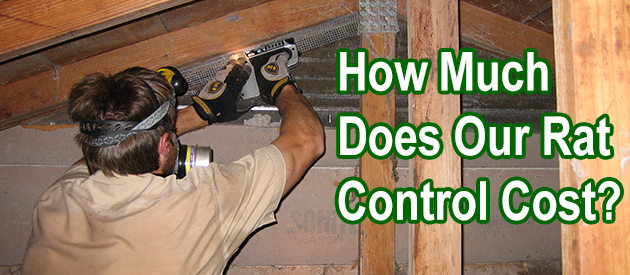Alachua County, Gainesville Rat Control Situation:
sir. first i want to thank you for all of this info. i have found one damn rat. i tried getting him out the door, but he ran right past me and up into the eves. very little or no evidence of him until i saw him. did i read they follow cockroaches? big palmetto style bugs. do they go after them to eat em? if so, ive many areas to address to seal. very fast son of a gun too. do u suggest i try baby powder at possible entry points for further evidence? ive only seen the one, but i know wheres one, more more than likely to follow. id love to shoot em, but the neighbors wouldnt like that. i reside in holiday florida. lots of work to do on eves and small openings, i just want to handle the lil bastard. thank you again. keith t. future rat murderer.....
Dear David, I am having a esculating problem with roof rats. I also have a disgruntled neighbor who I suspect of comitting malicious activity around my property. Is there anyway possible that acts of malicious behavior (such as tossing dog food, bird seeds ect. onto my property ) can be causing my rat problem. If so, how can I safeguard my attic from this invasion. The strange thing about the roof rat noise in the attic is that it is not consistent. My neighbor went on thanksgiving vacation and I did not hear the rat activity in the attic for one week. Upon his return, the problem returned. Is this possible and is there something I can do to safeguard the attic? I realize this is a strange situation.
Gainesville Rat Control Tip of The Week
The Myth That Poison Makes Rats Thirsty And Die Outside
No, rat poison doesn't make the rat thirsty. Poison doesn't make the rodent go out to drink, and along these lines die outside. Rat poison makes the rat dormant, and it dies any place it happens to be at when the poison takes effect. Since the rats living inside a house or building invest most of their energy inside the structure, they usually die inside that building, not outside.
Will Poison Make A Rat Thirsty And Die? (NO - That's A Myth)
Individuals use poisons since they think it is a protected, viable, hands-off strategy for evacuating pests. They have certain thoughts regarding it, but what amounts of those thoughts are true? One thought many convey is that poison will make rodents thirsty. When they consume the poison, they will out of nowhere have a solid, insatiable thirst. That will lead them outside, looking for water, where they will inevitably die. With this thought, poison appears to be the undeniable answer. It gets the rats out and kills them, getting rid of your concern with few to no drawbacks. The problem is, none of that is valid. Poison won't have this impact on rats or mice, or some other animal so far as that is concerned.
Using poison doesn't prompt thirst. It won't cause the rat(s) to leave the property, and go outside to find water. None of this is true; they are all myths. Poison will kill rats, however, not through thirst. Poisons kill rats in different ways, contingent upon the kind of poison you use. No poison will make the rodent want to leave the property whatsoever.
With each one, there is a higher possibility of the rat dying in your home. Ordinarily, this is going to mean within your dividers. Poisoned rats and mice are likely going to build up inside the dividers, and that is if they all eat the poison. There are various issues with poison, such as its ability to kill other animals, and the pain it inflicts on the rats, which adds to the negatives of it as a solution to pest invasions.


